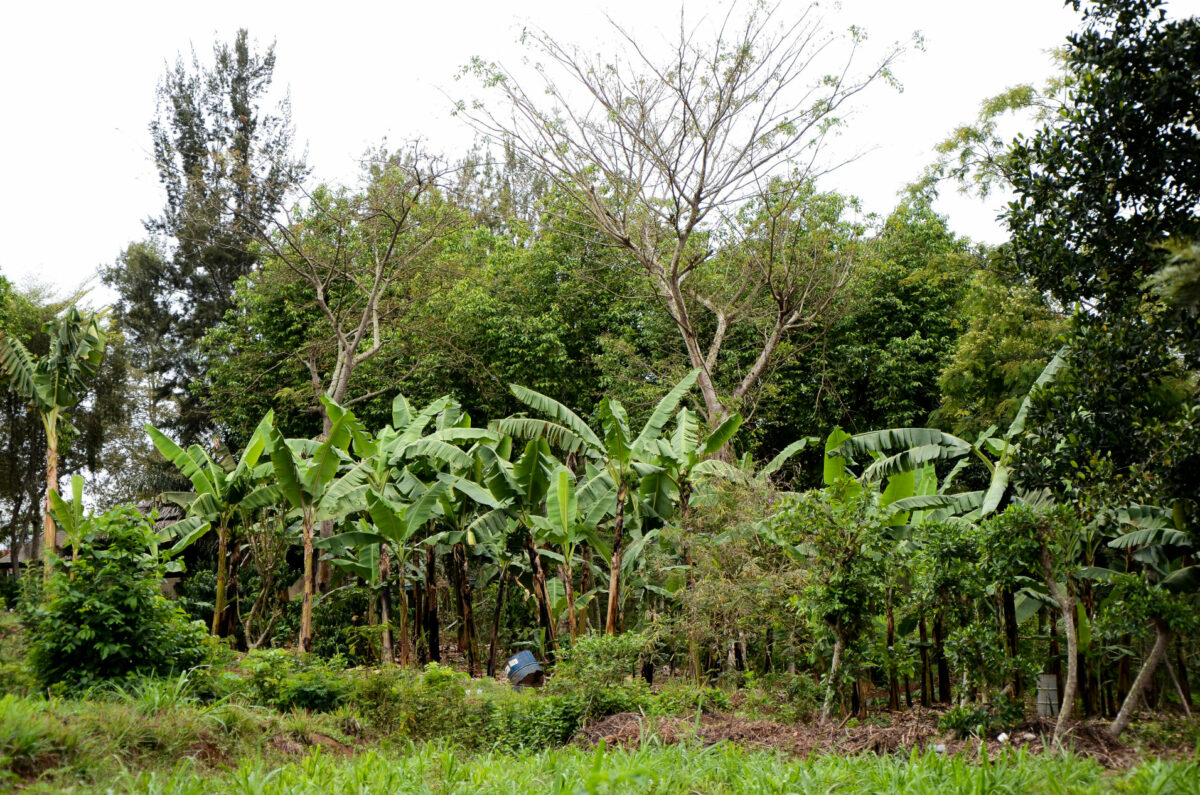From time to time I come across new words which have a wonderful resonance and really make me want to understand their meaning. A while ago, I heard the term Agroforestry and intuitively guessed that it was a combination of agriculture and forestry. Wikipedia’s first sentence about it[1] is:
Agroforestry is a land use management system in which trees or shrubs are grown around or among crops or pastureland.
Which more succinctly and accurately describes what I had guessed.
Then I heard the Syntropic word and I simply could not work out what it added to a rather clever way of copying natural systems to improve the trees and the crops. Google to the rescue
From Merriam Webster: syntropic: [adjective] repeated symmetrically without being reversed.[2]
From a medical dictionary: syntropic: [ sin-trop´ik ] 1. turning or pointing in the same direction. 2. denoting correlation of several factors, as the relation of one disease to the development or incidence of another.[3]
From Urban Dictionary: 1. extremely and shockingly or distressingly bad or serious. 2. causing or likely to cause terror; sinister.[4]
I don’t know about you, but none of those seem to add anything to the word Agroforestry, especially the last one! So I dug a little deeper and found the work of Ernst Götsch, who coined the phrase Syntropic Farming. Even he happily states that there is no simple, one-line answer to the question, ‘What is it?’
What he does say is:
“Syntropic Agriculture, on the other hand, helps the farmer replicate and accelerate the natural processes of ecological succession and stratification, giving each plant the ideal conditions for its development, placing each one in their “just right” position in space (strata) and in time (succession). It is process-based agriculture, rather than input-based. In that way, the harvest is seen as a side effect of ecosystem regeneration, or vice versa.”[5]
My take on it is that we have to find harmony with nature in all things we do, especially when we want to take something from nature. To encourage trees to grow in a natural way, with plants we can use as food crops growing happily in the same space, just makes sense.
Take ‘three sisters planting’, a system which dates back many hundreds of years and was used by the indigenous people of North America to increase crop yield. Grow maize, beans or squash on their own and you may get a crop of one, two or all three. Grow them together and the results can be spectacular.[6]
The maize grows tall, the beans climb up the maize and fix nitrogen as a food for it and the squash. The squash likes the shade from the maize, and in turn greatly reduces water loss from the soil, so all three plants benefit each other. In natural systems, combinations like this just happen… the slow pressure of survival of the fittest (or best) ensures that eventually these three plants would have found each other and grown together. Each makes the others stronger.
Apply that thinking on a forest scale and suddenly farmers become one with nature. Harvests taken by humans are just another part of nature, as long as we harvest enough seeds to plant again next time conditions are favourable.

In Kenya, we are using the expertise of local permaculture, agroforestry and syntropic agriculture experts to help our tree-planters work in total harmony with nature. They are moving from growing just one or two crops, to biologically diverse planting. If some of their crops aren’t suitable for the farmers to eat, they can either sell them to others who do like them or just let them be, for nature to use in its own processes.
Our friend and colleague Eva Jefa writes:
Syntropic agroforestry is replicating and accelerating the natural process of ecological succession and stratification thus giving each plant the ideal condition for its development. Placing each one in their “just right” position in space and time.
This system also plays a big role in combating climate change through carbon planting and promoting our ecosystem.
This is all new to me but it sure adds up when I look back to our immediate man made forests. We plant trees with the aim of creating forests but most of the time we plant one kind of tree at a particular place and another at another place. These are not healthy forests.
I’ve learnt that to have a healthy forest, we not only need diversity but also to consider stratification and succession.
Plants of different stratas in a syntropic system are planted on the same day particularly for the reason of having different needs to minerals and sunlight.
As the system continues, the pioneer species which are also known as the placenta create a foundation for a forest to build off. These should be the plants that can grow in harsh conditions. The pioneer species add biomass and nutrients to the soil, restoring some water retention, and provide some sort of nursery for the next species which are the intermediate (secondary) species.
The intermediate species are mostly perennials with longer life spans such as fruit trees and biomass creation species.
Last but not least, we have the climax species. These species are able to grow once the pioneer species have more or less phased out and some intermediate species grow to produce a community of mature plants. These include plants that provide food, fodder and fertiliser growing in harmony with each other, each filling a unique layer of a forest.
A syntropic agroforestry therefore evolves and transforms over time and space towards the increase of quantity and quality creating an abundance.
I think she puts it very well.
Simon West and The Team
References
1 https://en.wikipedia.org/wiki/Agroforestry
2 https://www.merriam-webster.com/dictionary/syntropic
3 https://medical-dictionary.thefreedictionary.com/syntropic
4 https://www.urbandictionary.com/define.php?term=Syntropic
5 https://agendagotsch.com/en/what-is-syntropic-farming/
6 https://en.wikipedia.org/wiki/Three_Sisters_(agriculture)




